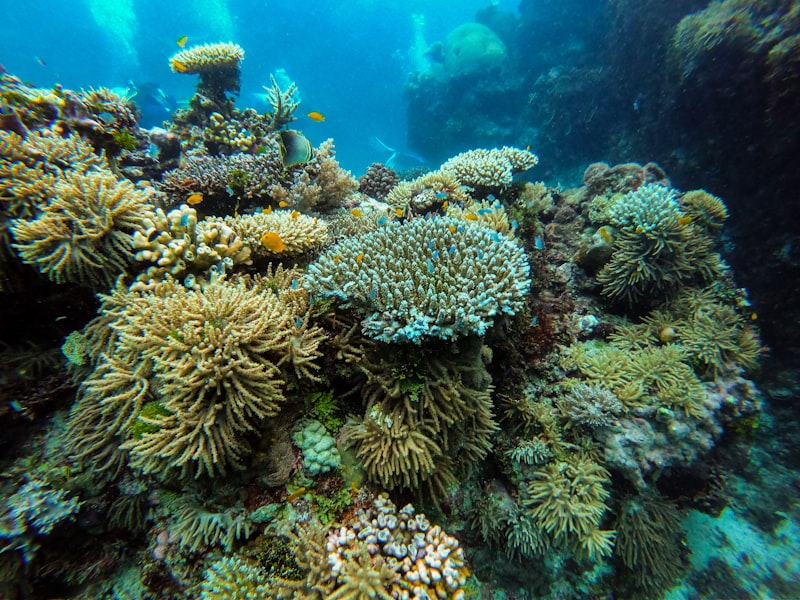Did you know that sharks have roamed the oceans for over 400 million years? These ancient predators play a crucial role in maintaining marine ecosystems, but they face numerous threats today. Let’s dive into the facts about shark conservation and the initiatives aimed at protecting these majestic creatures.
Sharks are often misunderstood as ruthless killers, but the reality is far from it. With over 500 species, they come in various shapes and sizes, each adapted perfectly to its niche in the ocean. From the enormous whale shark to the swift hammerhead, sharks exhibit a remarkable diversity that scientists continue to study.
However, sharks are under immense pressure due to human activities. One of the biggest threats they face is overfishing. Every year, millions of sharks are caught, primarily for their fins, which are used in shark fin soup—a delicacy in some Asian countries. This practice, known as shark finning, not only threatens shark populations but also disrupts entire marine ecosystems.
Climate change is another significant threat to sharks. As ocean temperatures rise and acidity levels change, it impacts the habitats where sharks live and breed. Coral reefs, crucial nurseries for many shark species, are particularly vulnerable to climate change, further endangering these creatures.
In response to these threats, various initiatives and organizations have been working tirelessly to conserve sharks. Conservation efforts include establishing marine protected areas (MPAs) where fishing is restricted, promoting sustainable fishing practices, and raising awareness about the importance of sharks in marine ecosystems.
One notable initiative is the Shark Conservation Fund, which supports projects worldwide aimed at protecting endangered shark species and their habitats. Through research, policy advocacy, and community engagement, these projects aim to ensure a future where sharks can thrive alongside human activities.
Unveiling the Secrets of Shark Conservation: Key Facts You Need to Know

Did you know that sharks play a vital role in maintaining marine ecosystems? As apex predators, they help regulate prey populations, ensuring a balanced food chain. However, factors like overfishing, habitat degradation, and climate change have severely impacted shark populations worldwide.
One of the key secrets to successful shark conservation lies in global cooperation. International agreements and policies, such as the Convention on International Trade in Endangered Species (CITES), aim to regulate the trade of shark products and protect endangered species. By implementing these regulations, countries can work together to combat illegal fishing and ensure sustainable practices.
Another essential aspect is raising awareness among the public. Many people still view sharks as dangerous predators, yet the truth is that shark attacks on humans are incredibly rare. Education campaigns that highlight the importance of sharks in marine ecosystems and debunk myths about their behavior can help change public perception and foster support for conservation efforts.
Innovative technologies also play a crucial role in shark conservation. Tracking devices like satellite tags and acoustic telemetry help researchers monitor shark movements, gather data on migration patterns, and identify critical habitats. This information is invaluable for designing effective conservation strategies and establishing marine protected areas where sharks can thrive.
Ultimately, the future of shark conservation depends on our collective efforts to protect these majestic creatures. By advocating for stronger regulations, raising awareness, and leveraging technology, we can ensure that sharks continue to swim in our oceans for generations to come.
From Fear to Fascination: How Conservation Efforts are Reshaping Shark Perception
Imagine this: a world where sharks evoke wonder and curiosity instead of fear. This transformation begins with education. Conservationists and marine biologists have been instrumental in debunking myths and highlighting the importance of sharks in maintaining a healthy ocean ecosystem. They are not mindless killers but rather apex predators that help regulate marine populations, ensuring the balance of species below them.
One of the most significant impacts of conservation efforts has been the shift in media portrayal. Instead of sensationalizing shark attacks, media outlets are now focusing on stories of conservation success and the incredible behaviors of these animals. Documentaries and research expeditions showcase sharks in their natural habitats, revealing their complex behaviors and interactions with other marine life.
Moreover, initiatives to protect shark populations have gained momentum worldwide. Governments, NGOs, and local communities are collaborating to establish marine protected areas and enforce regulations against illegal fishing practices such as shark finning. These efforts are crucial in safeguarding vulnerable shark species from extinction and promoting sustainable fishing practices.
But why should we care about sharks? Beyond their ecological role, sharks have also become a symbol of resilience and adaptation. They have survived for millions of years, evolving into diverse species perfectly adapted to their environments. Studying sharks provides scientists with insights into evolutionary biology and biomedical research, offering potential breakthroughs in areas such as wound healing and disease resistance.
In Deep Waters: Global Initiatives Making Waves in Shark Protection
One of the key initiatives gaining momentum is the establishment of marine protected areas (MPAs) specifically designed to conserve shark populations. These areas act as sanctuaries where sharks can thrive without the constant threat of fishing activities. By creating these protected zones, governments and conservation organizations ensure that critical habitats for sharks are preserved, allowing populations to recover and ecosystems to remain balanced.
Moreover, international agreements and conventions play a pivotal role in shark conservation efforts. The Convention on International Trade in Endangered Species of Wild Fauna and Flora (CITES) has listed several shark species under its protection, regulating and monitoring their trade to prevent overexploitation. This global framework not only controls the legal trade of sharks but also raises awareness about the importance of sustainable practices in fisheries worldwide.
In addition to protective measures, scientific research is fundamental in understanding shark behavior, migration patterns, and population dynamics. Advanced technologies like satellite tagging provide valuable insights into the movements of sharks across oceans, helping scientists advocate for larger conservation areas and better management strategies.
Furthermore, public awareness campaigns and eco-tourism initiatives have contributed significantly to shark conservation. By educating communities and tourists about the ecological value of sharks, these efforts reduce misconceptions and promote a positive attitude towards conservation.
As we navigate the complexities of marine conservation, these global initiatives underscore a collective commitment to safeguarding our oceans’ apex predators. Through concerted efforts in policy-making, research advancements, and public engagement, we can ensure a brighter future for sharks and the marine ecosystems they inhabit.
Behind the Fins: The Economics of Shark Conservation and Ecotourism
Sharks, often feared and misunderstood, play a pivotal role in marine ecosystems. Beyond their ecological significance, they are increasingly becoming key players in the realm of ecotourism and conservation economics. The allure of encountering these majestic creatures in their natural habitat has spurred a booming industry centered around shark tourism.
Ecotourism involving sharks isn’t just about thrilling underwater encounters; it’s also a significant economic driver for coastal communities worldwide. Tourists flock to destinations known for shark sightings, generating revenue through guided diving expeditions, cage diving adventures, and educational tours. These activities not only provide income for local businesses but also promote awareness about marine conservation.
From a conservation perspective, ecotourism can serve as a double-edged sword. On one hand, it incentivizes protection efforts as healthy shark populations are crucial for maintaining tourism appeal. Conservation initiatives, such as marine protected areas and sustainable fishing practices, are thus supported by the economic benefits derived from shark tourism.

Moreover, the economic value of a living shark extends far beyond a one-time catch. A shark alive in its natural habitat contributes significantly more to local economies over its lifetime through repeated tourist visits than it does as a catch on a fishing boat. This economic argument has been pivotal in shifting perceptions from viewing sharks solely as commodities to recognizing them as assets worth preserving for long-term financial gain.
In regions where sharks were once solely targeted for their fins, ecotourism has provided a sustainable alternative that aligns economic prosperity with environmental stewardship. This shift represents a broader trend in conservation economics, where the preservation of biodiversity and natural ecosystems is increasingly viewed as an investment rather than a cost.
As ecotourism continues to grow, the challenge lies in balancing economic benefits with environmental sustainability. Effective management strategies that safeguard shark populations while maximizing tourism revenue are crucial. This delicate balance ensures that future generations can continue to marvel at these apex predators while supporting coastal communities dependent on their conservation.
Saving Jaws: Innovative Technologies Revolutionizing Shark Tracking
In the vast, mysterious depths of our oceans, sharks have long captivated both fear and fascination. As crucial apex predators, their role in marine ecosystems is indispensable. However, human activities, including overfishing and habitat destruction, have posed significant threats to shark populations worldwide. To mitigate these challenges and ensure the conservation of these majestic creatures, scientists and conservationists have turned to cutting-edge technologies for revolutionary shark tracking.
One of the most groundbreaking innovations in shark conservation is the use of satellite tags. These sophisticated devices are attached to a shark’s dorsal fin and transmit real-time data on its location, movements, and even environmental conditions. By tracking the sharks’ migration patterns and habitat preferences, researchers can identify critical areas for protection and formulate effective conservation strategies.
Moreover, acoustic telemetry has emerged as a powerful tool in shark research. This technology involves implanting acoustic transmitters into sharks, which emit unique signals detected by a network of underwater receivers. This allows scientists to monitor individual sharks over extended periods, gathering invaluable data on their behavior, interactions, and responses to environmental changes.
In addition to tracking devices, drones equipped with high-resolution cameras are revolutionizing shark monitoring efforts. These aerial platforms provide researchers with a bird’s-eye view of shark populations, enabling them to survey vast ocean areas efficiently and non-invasively. By analyzing drone footage, scientists can estimate population sizes, study social dynamics among sharks, and assess the health of marine habitats.
Furthermore, advancements in genetic analysis have enhanced our understanding of shark populations at a molecular level. DNA sampling techniques enable scientists to identify species, track migration routes, and assess genetic diversity among shark populations. This genetic data is crucial for designing conservation strategies tailored to the specific needs of different shark species.
As technology continues to evolve, so too does our ability to protect and conserve sharks effectively. By harnessing these innovative tools and approaches, researchers are paving the way towards a more sustainable future for these essential apex predators of the ocean.
Frequently Asked Questions
How can individuals contribute to shark conservation?
Learn how individuals can support shark conservation efforts through advocacy for marine protected areas, responsible seafood choices, and participation in beach cleanups. By raising awareness and supporting sustainable fishing practices, you can help protect shark populations and their ecosystems.
What are some successful initiatives promoting shark conservation?
Learn about successful initiatives that promote shark conservation worldwide. Discover how various organizations and communities are actively protecting shark populations through conservation efforts, research collaborations, policy advocacy, and education programs.
What are the main threats to shark populations worldwide?
Learn about the primary threats facing shark populations globally, including overfishing, habitat loss, and bycatch. Understand how these factors impact shark numbers and ecosystems.
How do conservation efforts protect shark species?
Learn how conservation efforts safeguard shark species by implementing measures like marine protected areas, sustainable fishing practices, and international agreements to regulate trade. Discover the impact of research and education in raising awareness and promoting conservation actions to ensure the survival of shark populations.
What role do sharks play in marine ecosystems?
Discover the crucial role sharks play in marine ecosystems. They are apex predators that regulate prey populations, maintaining balance and biodiversity. By controlling lower trophic levels, sharks help sustain healthy coral reefs and seagrass beds. Understanding their role is vital for marine conservation efforts.


